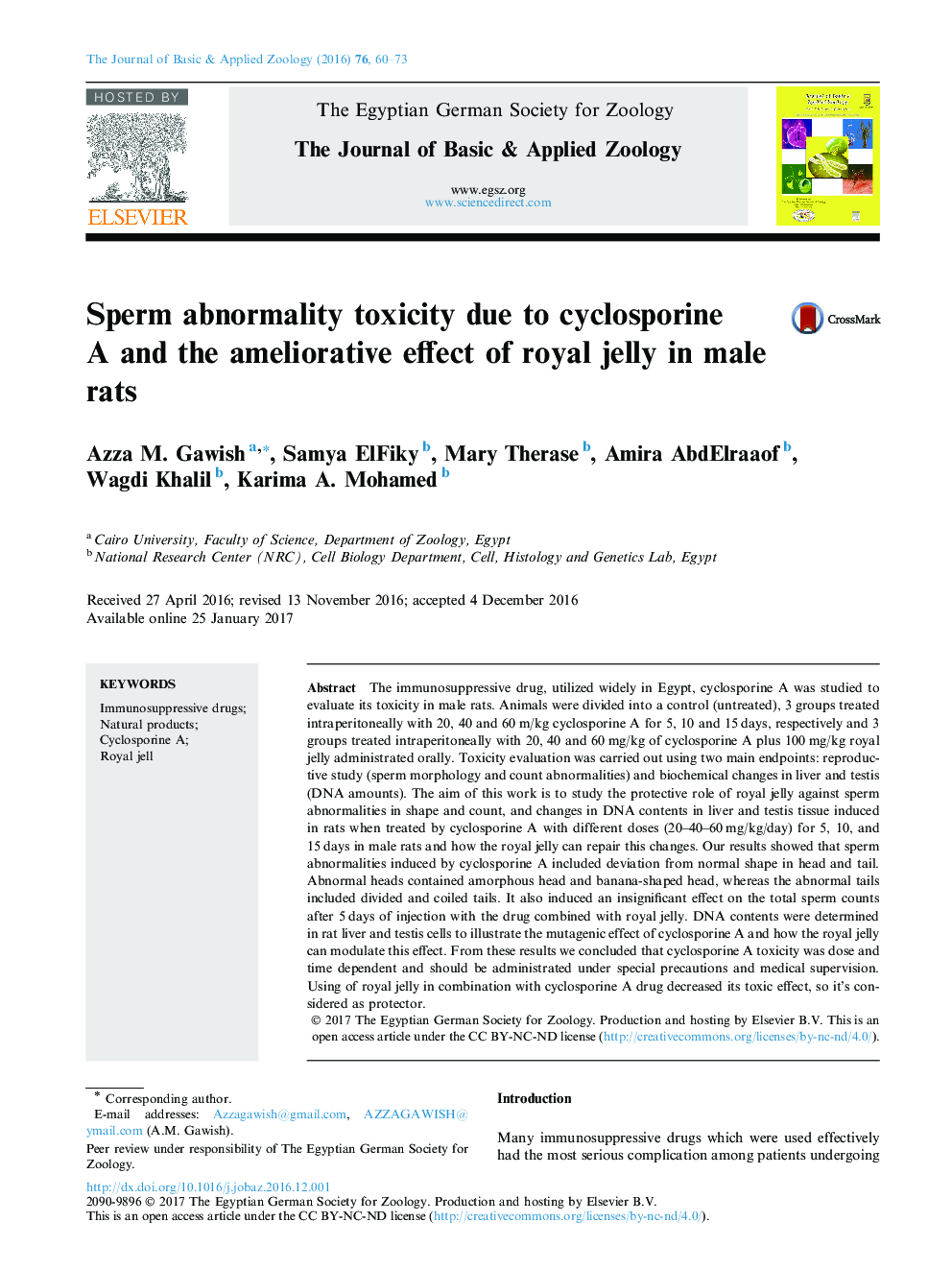| Article ID | Journal | Published Year | Pages | File Type |
|---|---|---|---|---|
| 6368736 | The Journal of Basic & Applied Zoology | 2016 | 14 Pages |
Abstract
The immunosuppressive drug, utilized widely in Egypt, cyclosporine A was studied to evaluate its toxicity in male rats. Animals were divided into a control (untreated), 3 groups treated intraperitoneally with 20, 40 and 60Â m/kg cyclosporine A for 5, 10 and 15Â days, respectively and 3 groups treated intraperitoneally with 20, 40 and 60Â mg/kg of cyclosporine A plus 100Â mg/kg royal jelly administrated orally. Toxicity evaluation was carried out using two main endpoints: reproductive study (sperm morphology and count abnormalities) and biochemical changes in liver and testis (DNA amounts). The aim of this work is to study the protective role of royal jelly against sperm abnormalities in shape and count, and changes in DNA contents in liver and testis tissue induced in rats when treated by cyclosporine A with different doses (20-40-60Â mg/kg/day) for 5, 10, and 15Â days in male rats and how the royal jelly can repair this changes. Our results showed that sperm abnormalities induced by cyclosporine A included deviation from normal shape in head and tail. Abnormal heads contained amorphous head and banana-shaped head, whereas the abnormal tails included divided and coiled tails. It also induced an insignificant effect on the total sperm counts after 5Â days of injection with the drug combined with royal jelly. DNA contents were determined in rat liver and testis cells to illustrate the mutagenic effect of cyclosporine A and how the royal jelly can modulate this effect. From these results we concluded that cyclosporine A toxicity was dose and time dependent and should be administrated under special precautions and medical supervision. Using of royal jelly in combination with cyclosporine A drug decreased its toxic effect, so it's considered as protector.
Related Topics
Life Sciences
Agricultural and Biological Sciences
Agricultural and Biological Sciences (General)
Authors
Azza M. Gawish, Samya ElFiky, Mary Therase, Amira AbdElraaof, Wagdi Khalil, Karima A. Mohamed,
